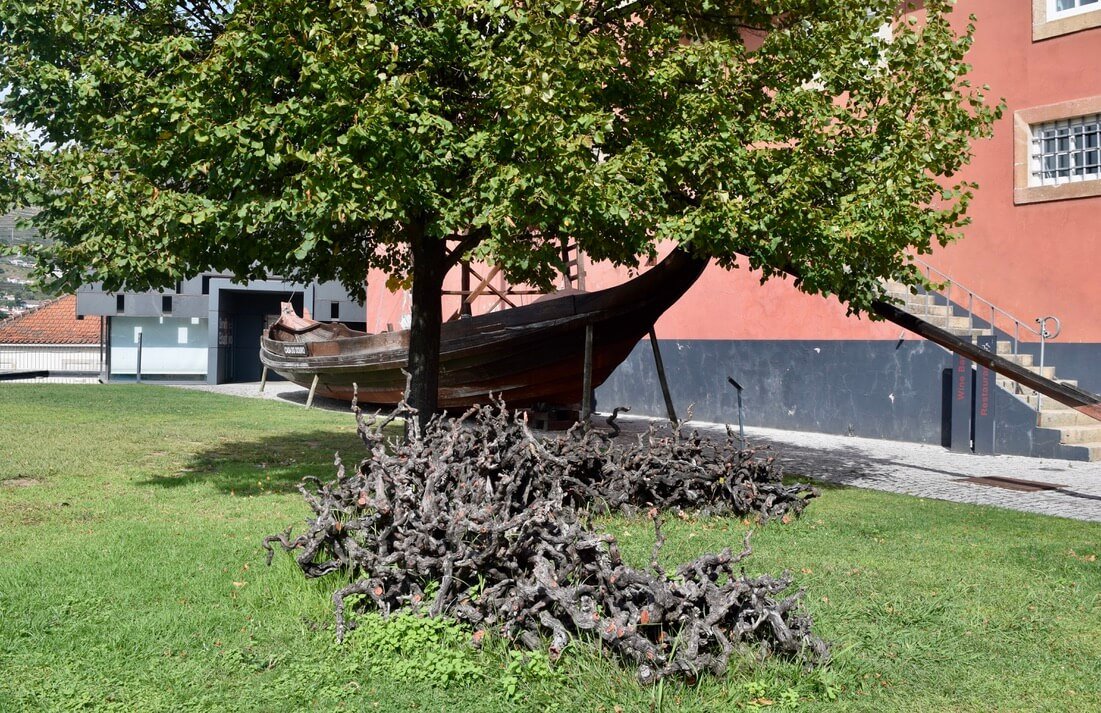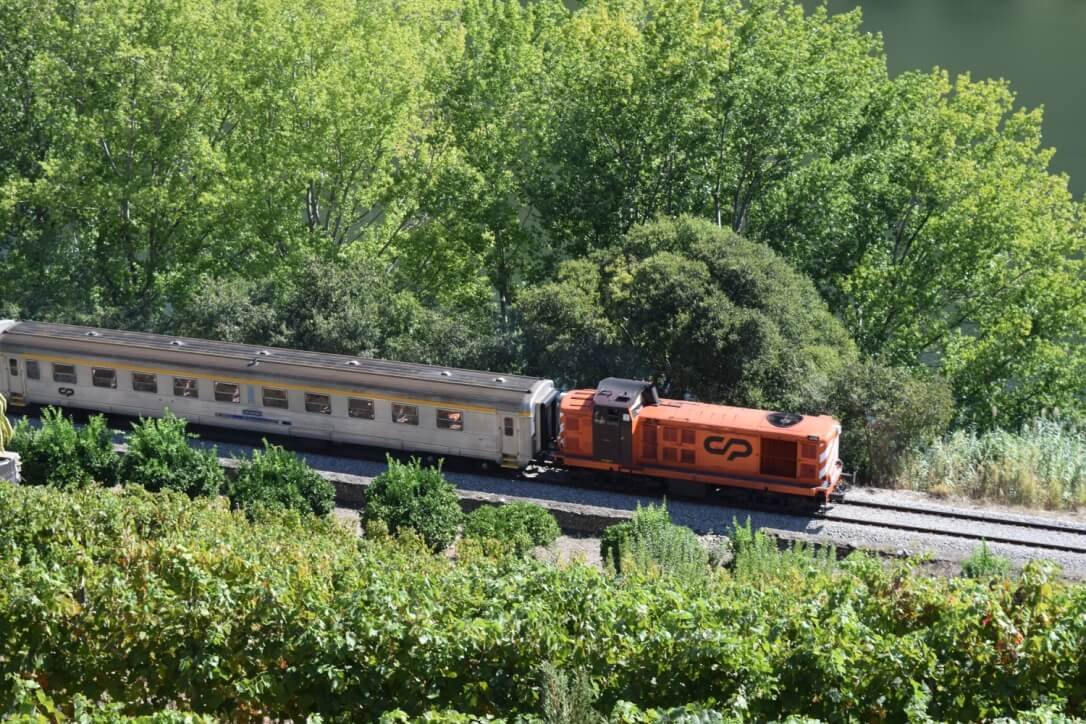VISIT PORTUGAL’S DOURO VALLEY WINE REGION

The River Douro - Douro Superior region
Photo source: Wine Keller
Winekeller wine travel and wine tour experiences in the Douro wine region:
Is Portugal’s Douro Valley worth visiting?
YES!!!
The Douro Valley is Portugal’s most famous wine region - and with good reason! It is the home of Port yes, but it is also one of the most spectacular landscapes in the world, a mixture of Nature and Human influences and one of the top global wine tourism destinations. It is so impressive it is recognised as a Unesco World Heritage Site.
Douro Valley vineyards and Porto
Vineyards have been in the Douro Valley for centuries, but it is only after improved communication links with first the railway and then roads, helped through significant EU funding, that this amazing region has been able to develop to what it is today - 250,000 hectares of vineyards stretching from the Spanish border to about 90 kilometres from Porto. Years ago, the port was transported from the Douro vineyards in wooden boats called ‘rabelos’, where it was then aged in warehouses in Vila Nova de Gaia, just on the opposite side of the river to the city of Porto. Today the mode of transportation may be different but the link between the Douro Valley and Porto remains the same, which is why when planning a wine tour, it makes sense to visit both!
The vines cling improbably to steep terraces, built originally in the 18th and 19th centuries by some 33,000 workers. As the terraces are so narrow, many vineyards are now being planted up the slopes instead of across, to encourage greater yields and allow for today’s mechanisation and irrigation to be used. The climate here is mainly dry, with cold winters and very hot summers, with protection from the cooling effects of the Atlantic given by the Serra do Marão mountains. Yields here are relatively low, due to the increasingly hot temperatures - compare an average of one tonne of grapes/hectare with 15 tonnes/hectare in an irrigated New World vineyard. Climate change is a huge and growing threat to wine producers in the Douro Valley.
The soil is mainly schist, which along with the dry weather forces the vines to grow deeper in search of water, leading to higher quality grapes and wines. With the harsh, dry climate it’s incredible that plants can not only grow but flourish. That is the wonder of the vine!
Vines growing above Pinhão
Terraces on the steep mountain slopes
A 'rabelo' boat, which was used historically to transport port to Porto
Portugal’s Douro Valley wine map
The Douro Valley however is made up of distinct 3 subregions which have very different geographies and their own unique micro-climates, leading to the production of very different grapes and wines.
Source: Graham’s, Symington Framily Estates
Source: Douro museum, Perso de Régua
Baixo Corgo region (Lower Douro):
The westernmost region and the oldest in terms of wine production, with the highest density of vines. It has the heaviest annual rainfall and is the coolest of the 3 subregions.
Cima Corgo (Douro heartland):
Today recognised as the heart of the Douro with vineyards that are considered the best for Port wine production. All of the main Port brands have their vineyards here and the famous names can be seen on the vineyard slopes. There is some granite in the soil here as well as schist.
Douro Superior (Upper Douro):
The most easterly and more mountainous subregion, only made accessible in recent years. Extremely harsh climate, with temperatures reaching above 45 degrees in the Summer and limited rainfall.
Douro Valley wine
Approximately half of the wine made in this incredible wine region is fortified Port wine and the other half is non-fortified red wine, mostly red, but increasingly white, all labelled Douro DOC. A new wave of creative winemakers, regional investment and a growing demand for a lighter style of wine is helping drive increased production of high-quality table wines, alongside the traditional Port wines.
The Douro Valley wine region is highly regulated and was the world’s first wine region to be regulated in 1756 to protect the top vineyards and the wine quality.
What is a Port wine?
Only local, indigenous grapes can be used to make Port wine - and of the many red grape varieties, there are five main ones - Tinta Barroca, Tinta Roriz, Tinto Cão, Touriga Franca and Touriga Nacional.
Port is different to a still wine, in that the natural fermentation process is halted when just 50% of the natural sugar has converted into alcohol, through the addition of a distilled wine-brandy. This explains the relative sweetness of a Port wine and the higher level of alcohol (typically 18-22%), caused by the addition of the distilled wine.
There are different types of Port including Ruby Port, which is often matched with cheese and Tawny Port which has a more caramel taste and matches well with desserts. The use of smaller oak barrels for ageing Tawny Port leads to its special nutty flavour and brown colour as it is open to more oxidising than for a Ruby Port which is aged in much larger casks.
White port and more recently Rosé port is also produced, popular as an aperitif, with tonic water added to create a very refreshing drink!
For more information on the famous Port wine, see here!
The Douro's long, successful history with Port
The Douro's globally famous wine
Harvest time!
Douro red wines
The same red grapes that produce Port wine are also used to produce excellent still, red wines. The relative climate and altitude of the vineyard influence the style, the higher and cooler allowing for a lighter wine style, but in general Douro reds are full-bodied. The quality in recent years has soared and many are highly collectible.
Douro white wines
Again the white grape varieties that produce white Port also produce light-medium bodied white wines. They are generally crisp, mineral/flinty wines with minimal fruity flavours and high acidity. White grape varieties are a little harder to find and include the white Port varieties of Rabigato, Viosinho, Gouveio, Folgazão and Malvasia.
Douro Valley olive oil
Mention must be given to the fabulous Douro Valley olive oil - second in importance to wine in this region and an important barrier to help protect the vines.
Driving through the Douro Valley you will see many, many olive trees planted amongst the vines, as well as on old vine terraces, in areas which were devastated by the Phyloxera vine disease in the late 1800s. The olive and vine are considered by the locals as a ’marriage which needs to be protected and nurtured’.
Almonds and pine nuts are also produced in quantity here.
Olive trees in the Cima Corgo, Douro Valley
Recommended Douro Valley wineries:
Deciding which Douro winery - or Quinta - to visit is a challenge, as there are so many! We only like to recommend ones we have actually visited or ones which have been recommended to us personally, but whichever one you decide to visit, the likelihood is you will enjoy an excellent wine experience! Most of the top Douro Quintas offer not only a visit and wine tasting, but superb views, excellent cuisine - and often - lovely accommodation. The ones listed below are recognised as amongst the best to visit!
Trás-os Montes, Upper Douro
Planning a wine tour in the Douro Valley
A visit to the Douro Valley is the most incredible experience for any wine, travel, food and culture enthusiast, even if you don’t like Port!
You can gain a really good impression of the region in 3-4 days and can visit most areas from one base, staying in either a hotel or perhaps a Quinta which offers accommodation, in or around one of the main towns of Peso da Régua or Pinhão.
A good time to visit the Douro is September/October when the sun is still warm, the colours are beautiful and the harvest is underway! It really is very hot in the middle of Summer, with temperatures regularly reaching 45 degrees.
Combine with a stay in Porto and Nova de Gaia
Flight links are via Porto and it makes good sense to combine your visit to the Douro Valley vineyards, with a stay in the city of Porto or Nova de Gaia, where you can also explore the port lodges and do some port wine tasting!
Places to visit and things to do and see in the Douro:
You can enjoy the ‘Port and Douro wine route’ by car, train and boat!
Exploring by car:
Hire a car in Porto and it’s about an hour’s drive to the heart of the Douro. Make sure you drive down the famous EN222 - a road acclaimed as ‘the best and most beautiful in the world’! Believe us, it truly is the most amazing drive!
Exploring by train:
Alternatively take the train from Porto - it’s a great service, great value and takes you right through the valley, with spectacular views. You can also take an old historic steam train from Régua and transport yourself back in time whilst marvelling at the scenery!
River cruises on the Douro:
Take a cruise from Nova de Gaia through the Douro Valley, or do it in reverse from the main towns of Régua or Pinhão. Alternatively if you are based in the Douro Valley, there are lots of options for exploring by boat. See A Bordo Tours as an example of what you can do.
Hotels in the Douro Valley:
Portuguese wine tourism is well developed here so take the opportunity to stay in a wine-themed hotel or at a working wine estate/Quinta to fully experience the delights of this amazing region. See examples above of excellent wine estates, many of which also offer accommodation options.
See our blog here recommending the top things to see and do in the Douro Valley!
For more insights and information on visiting Portugal’s Douro Valley region, see ‘VisitPortugal’ here.
The incredible Paleolithic rock engravings at Penascosa
Beautiful Lamego and the Shrine of Nossa Senhora dos Remédios












Honest review and personal feedback about our 2 night stay, wine tour & wine tasting at the amazing Quinta de la Rosa wine estate - one of the Douro Valley’s best wineries…